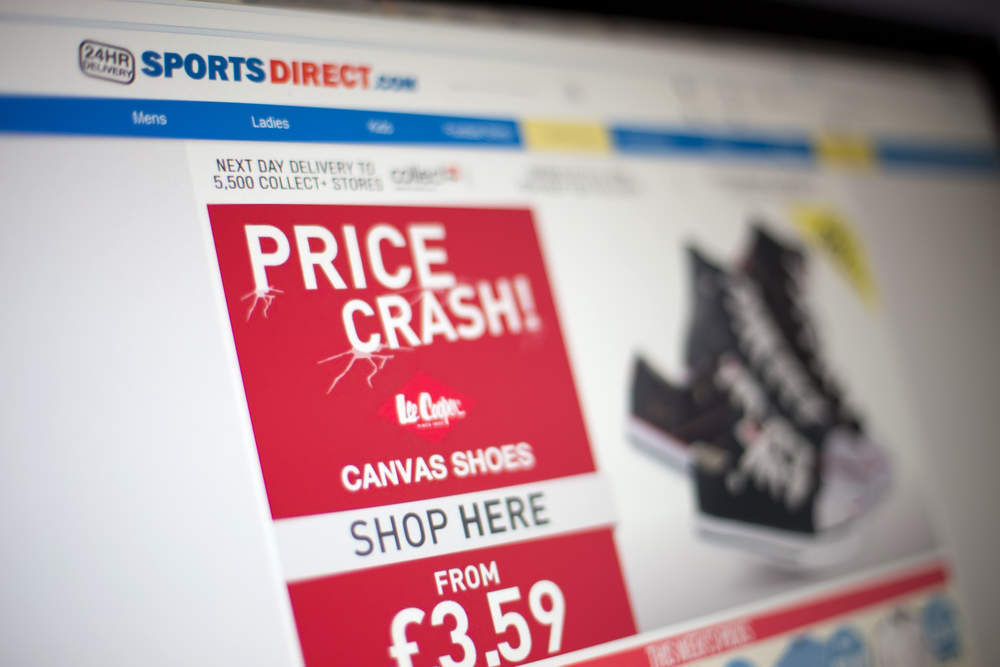
Sports Direct last week announced its full year operating profit had slumped 28.3 percent on last year to £160.1m due to its failure to hedge against currency swings in the aftermath of the European Union referendum.
Don’t let this distract from the main issue Mike Ashley’s retail empire is facing though.
The company’s main failing in the last two years has been its lack of responsiveness to the fast-paced and more competitive sportswear market.
Poor in store facilities, disappointing products, and weakened brand image caused Sports Direct to under perform the 4.9 percent growth in the market in 2016, losing 0.4 percentage points from its leading market share.
While Sports Direct’s 2017 market share is forecast as 22.9 percent, this is just 3.5 percentage points ahead of its biggest rival JD Sports.
To retain the top spot and fight off new online competitors like the titan retailer Amazon and the fashion powerhouse ASOS, Sports Direct must better react to trends and supply what the customer actually wants.
How well do you really know your competitors?
Access the most comprehensive Company Profiles on the market, powered by GlobalData. Save hours of research. Gain competitive edge.

Thank you!
Your download email will arrive shortly
Not ready to buy yet? Download a free sample
We are confident about the unique quality of our Company Profiles. However, we want you to make the most beneficial decision for your business, so we offer a free sample that you can download by submitting the below form
By GlobalDataFurther investment in its woeful stores are essential if it’s going to compete with JD Sports, which achieved double digit sales growth over the past year due to store investment and fashion line partnerships that paid off.
Tech gait analysis machines that tell people what shoes are best for them have become industry standard and Sports Direct is lacking.
Putting money into this kind of thing would help to shift the focus from low prices to value for money, an increasingly more important driver of clothing and footwear spend.
Staff would need to be fully trained however, and that’s another cost investors will have to brace for.
More shop-in-shop style formats – which it currently has in flagship stores such as Oxford Street – need to be more widely used so the chain is better associated with its partner brands NIKE and Under Armour.
The Selfridges of Sport?
Sports Direct has an ambition to become the Selfridges of Sport, which chief executive Mike Ashley has long being trying to sell to investors.
But its lines just don’t reflect that reality with people in its target market demanding far more in terms of style and fashion.
Unfashionable brands such as Kangol and Golddigga that still can be found on Sports Direct’s racks have fallen behind the times and been replaced by a 2017 revival of brands such as Ellesse.
Meanwhile, Sports Direct faces far greater competition in womenswear since it missed the boat on the athleisure trend and has consequently lost share to clothing retailers such as H&M and boohoo.com.
Big name sports brands have also become more accessible on Amazon and Asos; as demand fuels supply.
Sports Direct has announced a strategic partnership with ASICS, showing it is now recognising the importance of stocking more relevant third-party brands.
However, the retailer would be better off improving its fashion-led sportswear offer by stocking brands like boohooFIT and Zakti or partnering with a celebrity like Lucy Mecklenburgh or Joe Wicks to attract shoppers and drive destination appeal.





Related Company Profiles
ASOS Plc
Amazon.com Inc
ASICS Corp
NIKE Inc